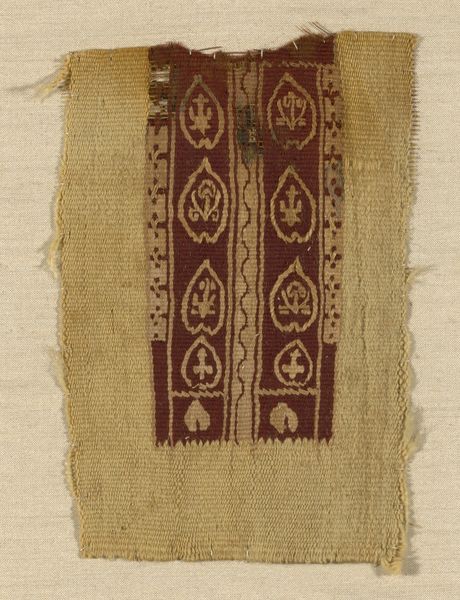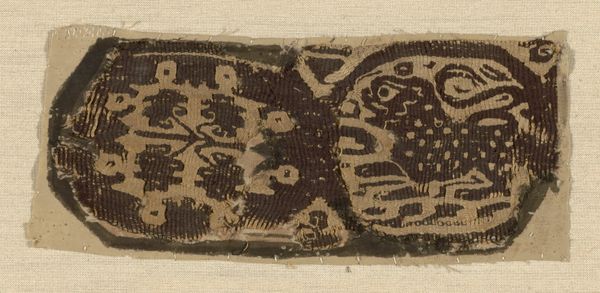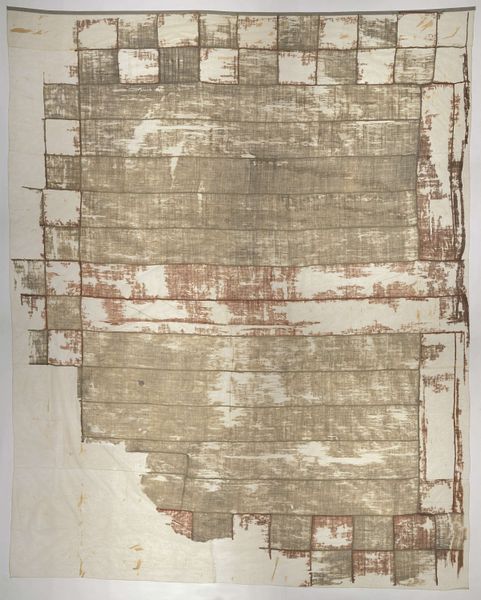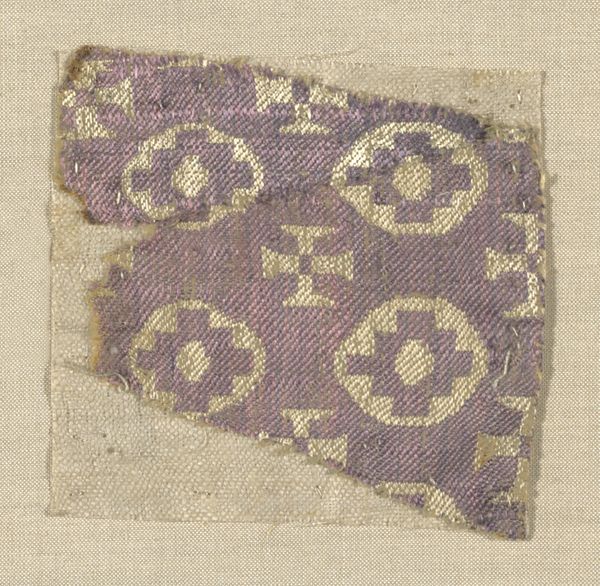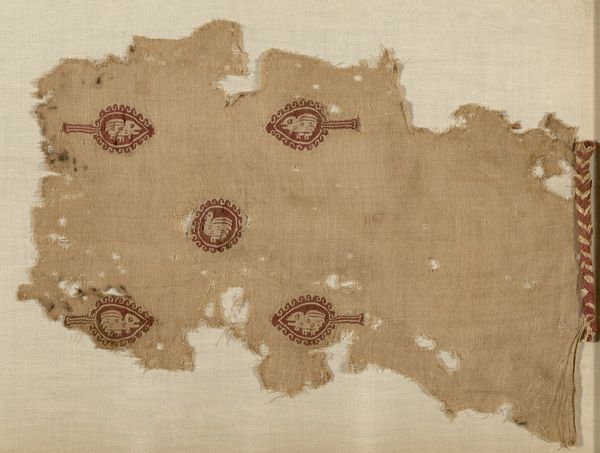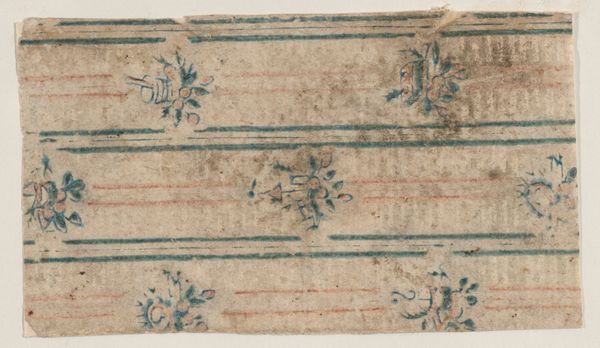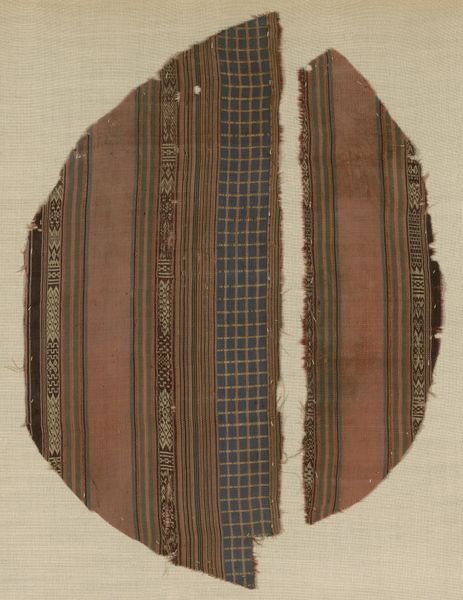
weaving, textile
#
african-art
#
medieval
#
weaving
#
textile
#
egypt
#
islamic-art
#
mixed media
Dimensions: 14 × 11.4 cm (5 1/2 × 4 1/2 in.)
Copyright: Public Domain
This fragment was made anonymously, using textile techniques and materials unknown to us. It may seem a humble object, but even a small textile can reveal much about cultural values, trade networks, and social hierarchies. Imagine this fragment as part of a larger piece, perhaps clothing or a furnishing, imbued with symbolic meaning. The colors, patterns, and materials would have signaled status, origin, or belief. Textiles were, and still are, central to social life. They provide warmth, protection, and beauty. The production of textiles often involved specialized labor, with workshops and guilds controlling techniques and trade. The study of textile fragments like this can tell us about the lives of ordinary people, the circulation of goods, and the global connections that shaped societies in the past. To understand this fragment more fully, textile historians might use comparative analysis, looking at similar textiles from known origins. We might look at trade records and archaeological findings. By piecing together such evidence, we can gain a richer understanding of the social and cultural context.
Comments
No comments
Be the first to comment and join the conversation on the ultimate creative platform.
